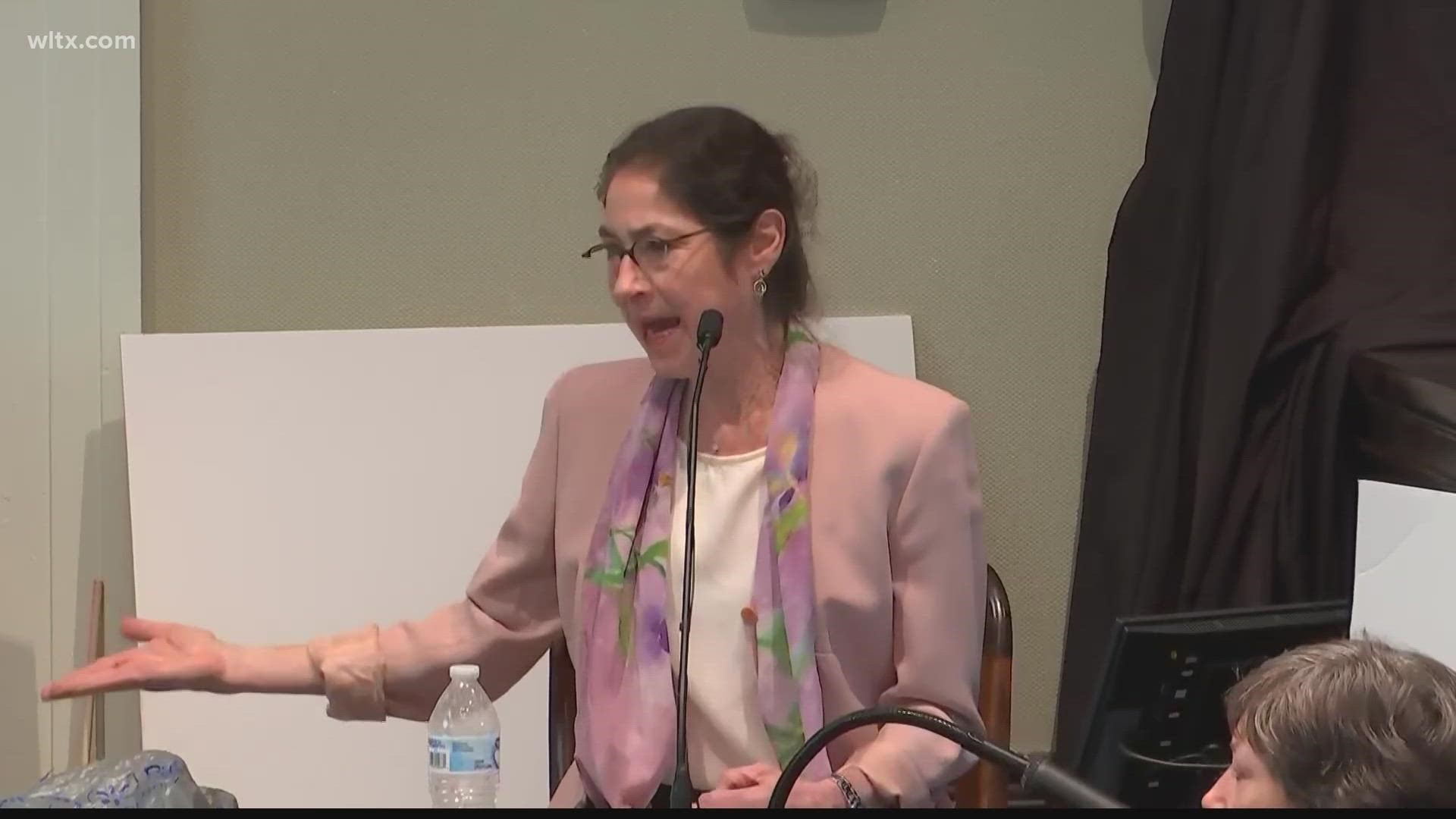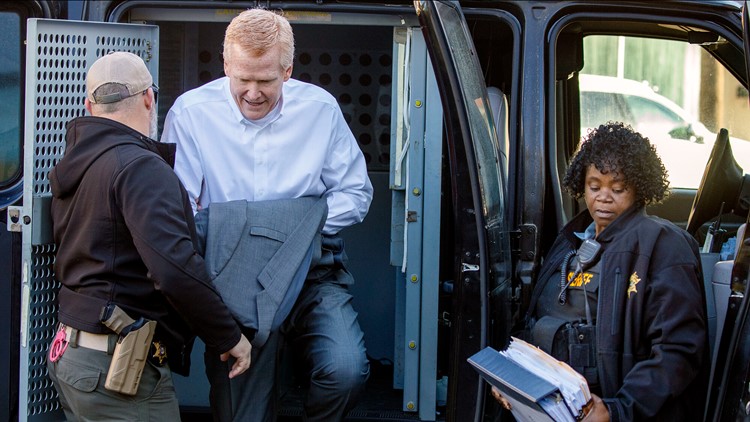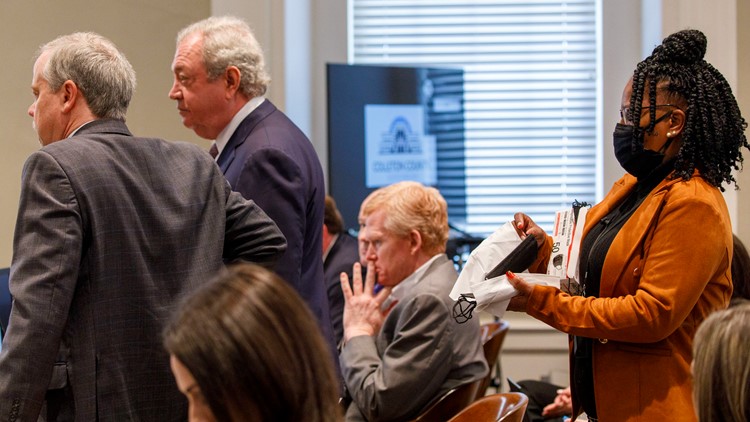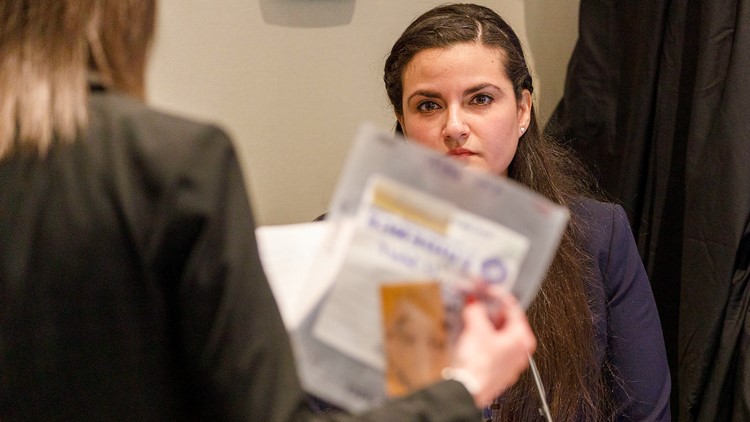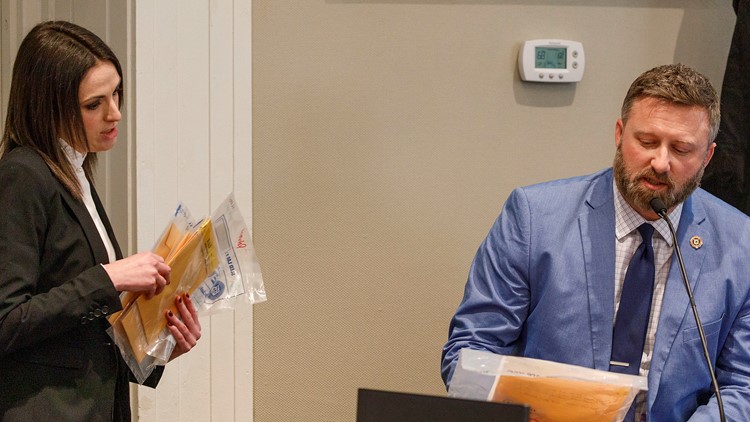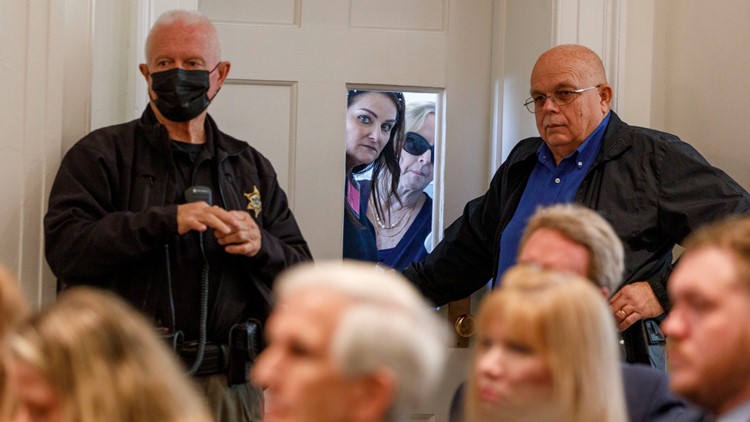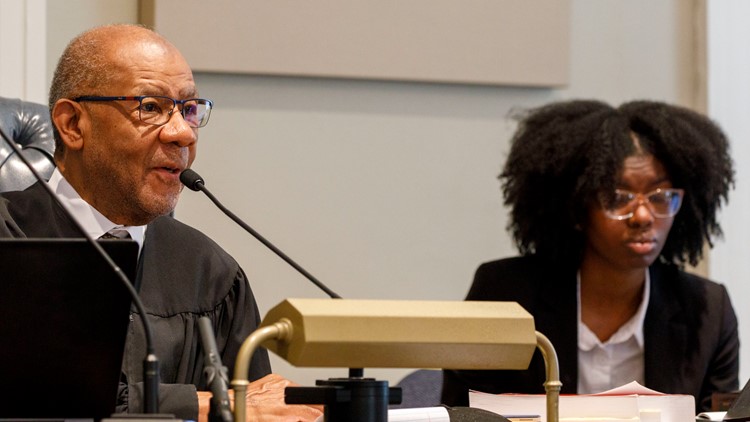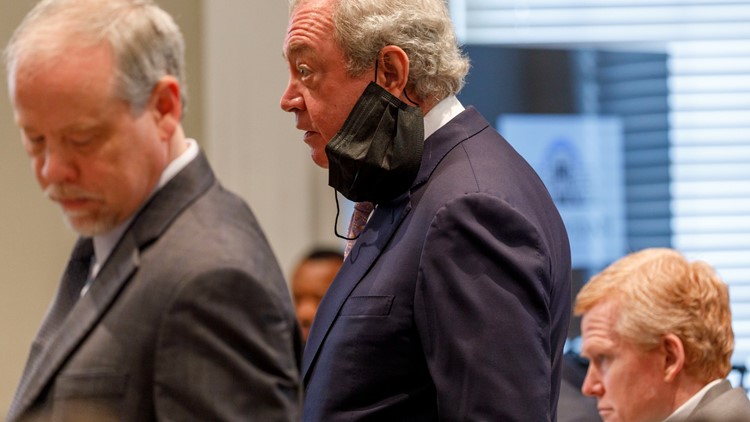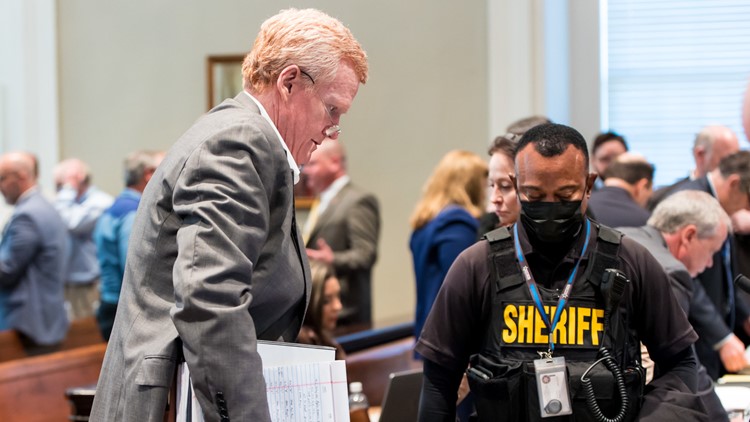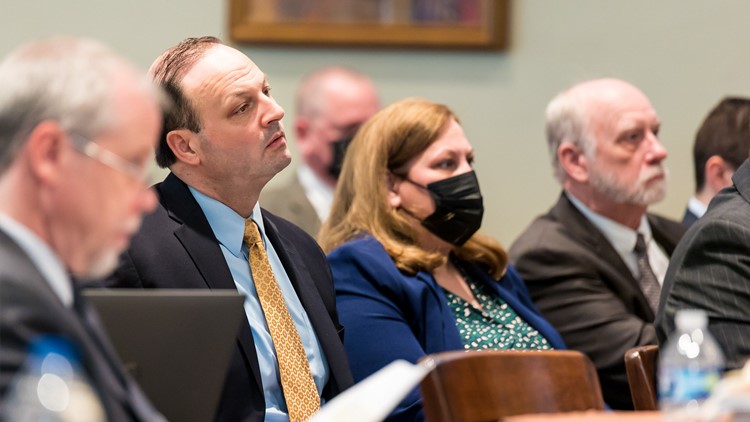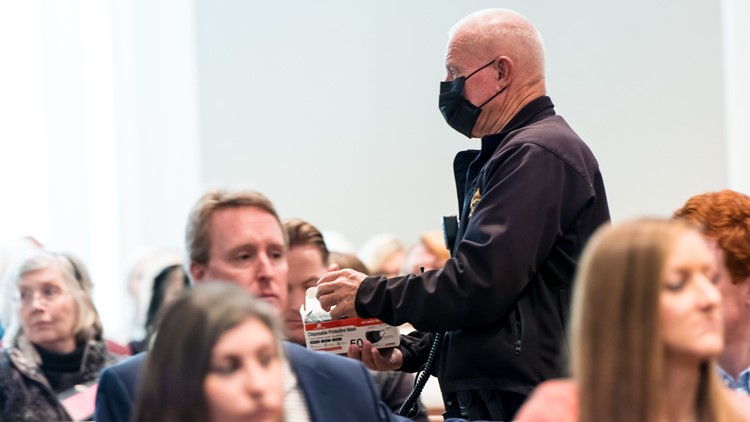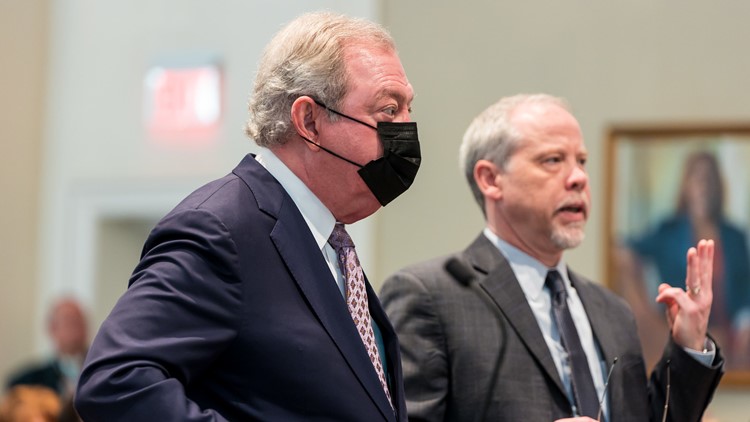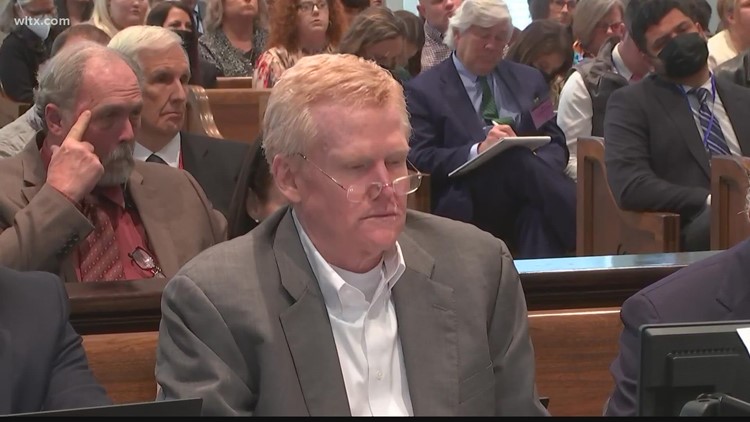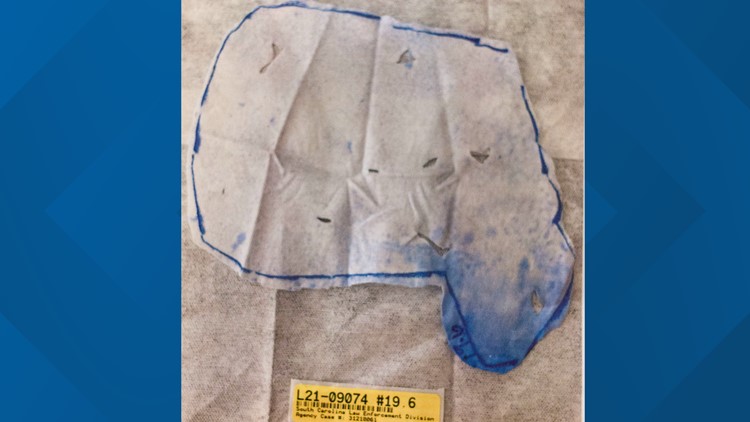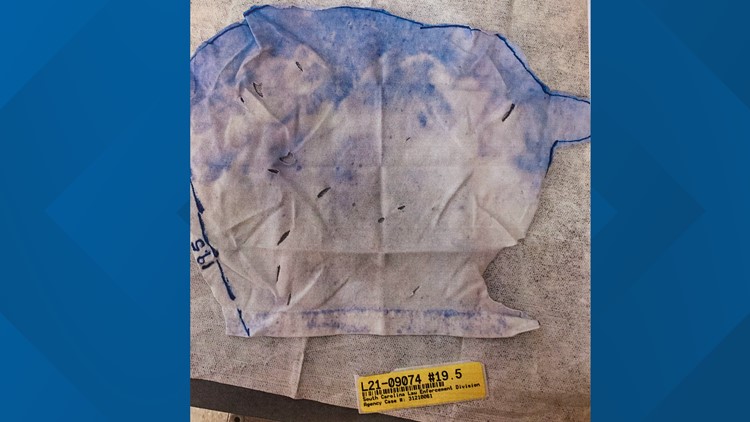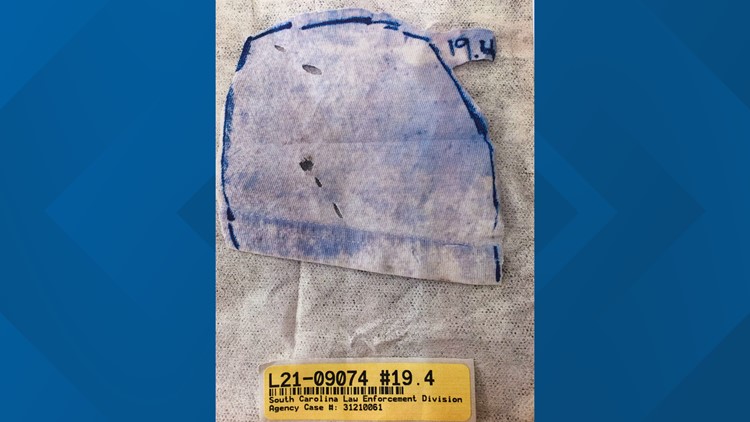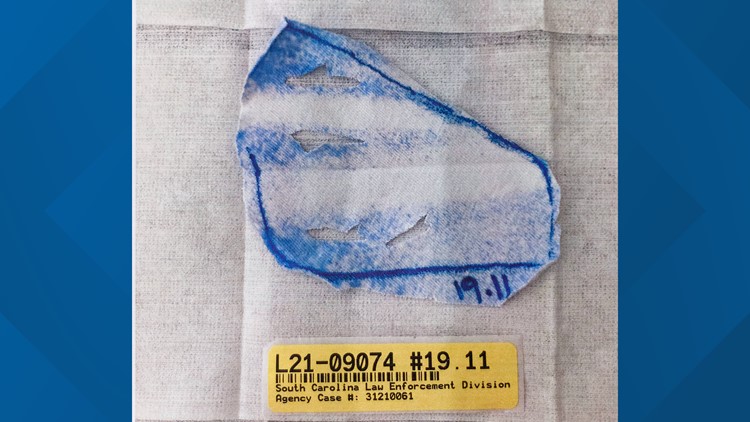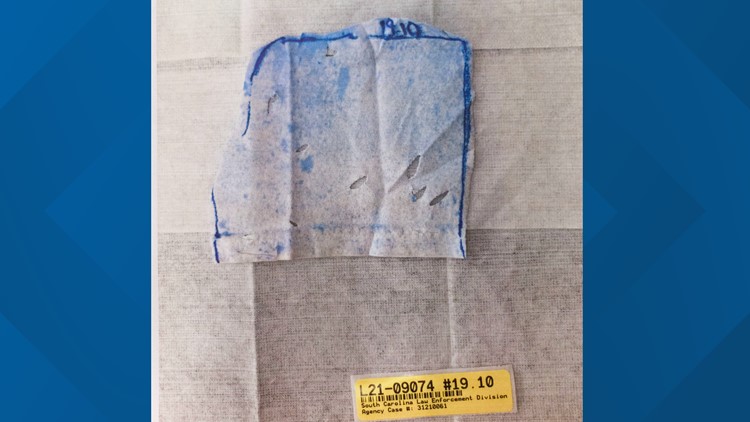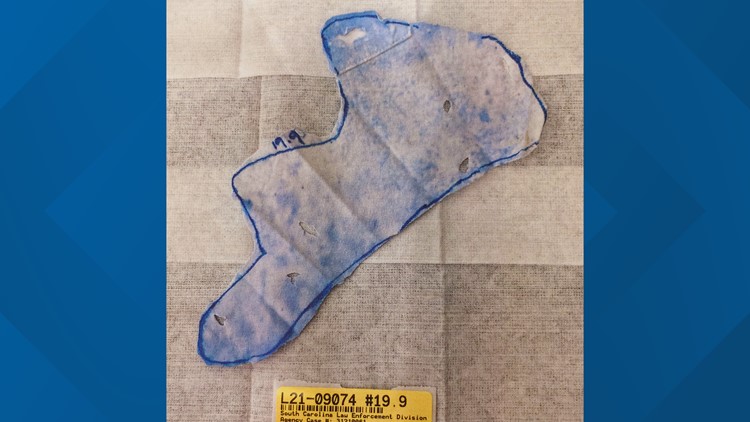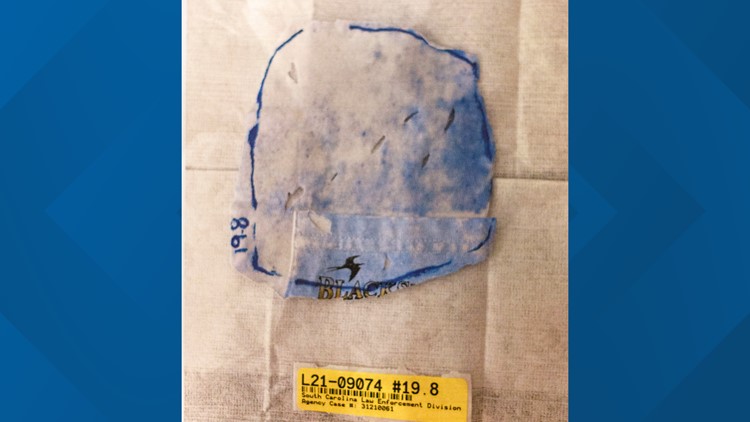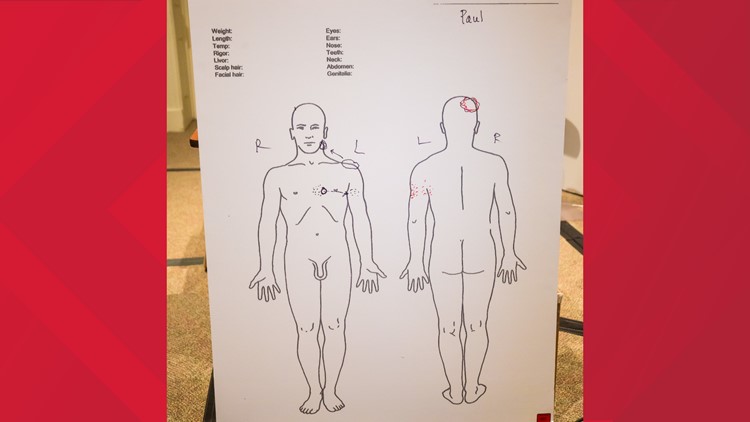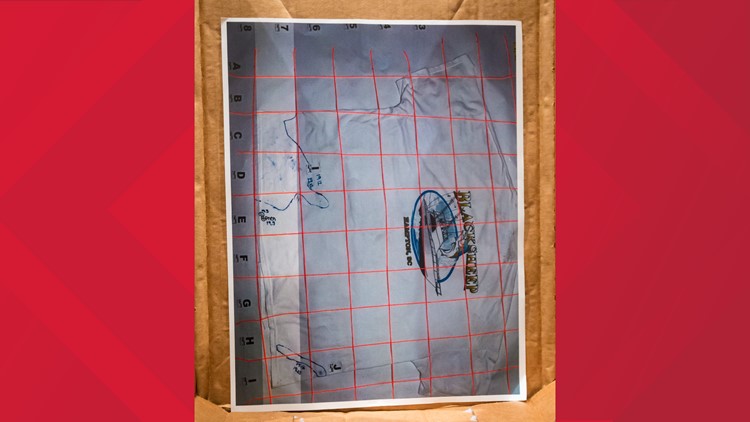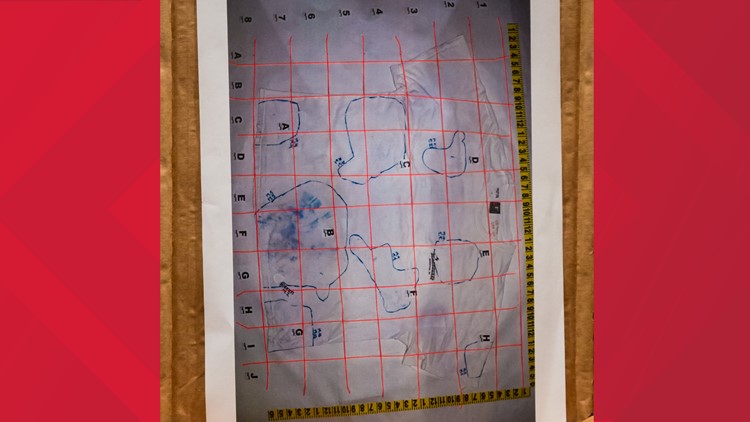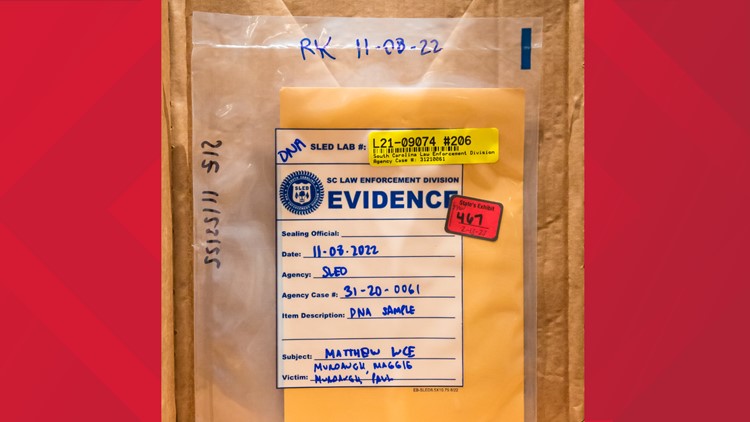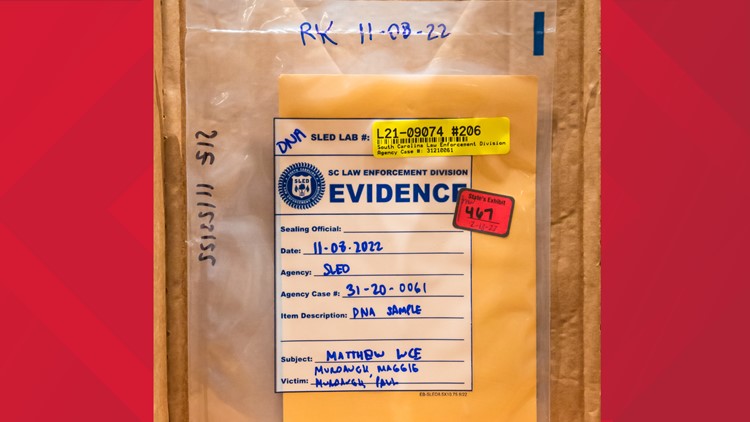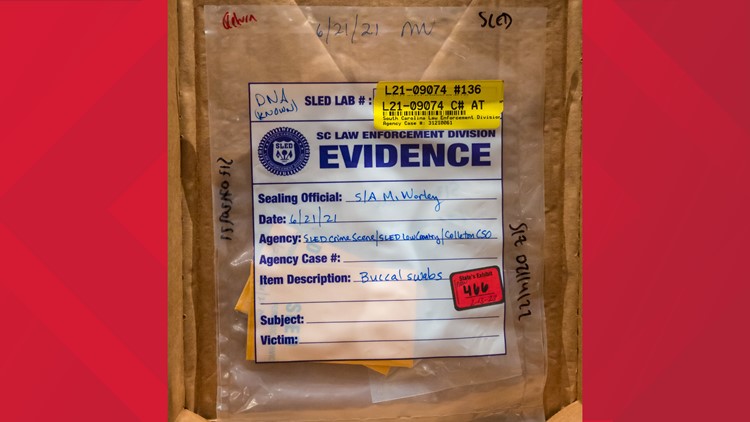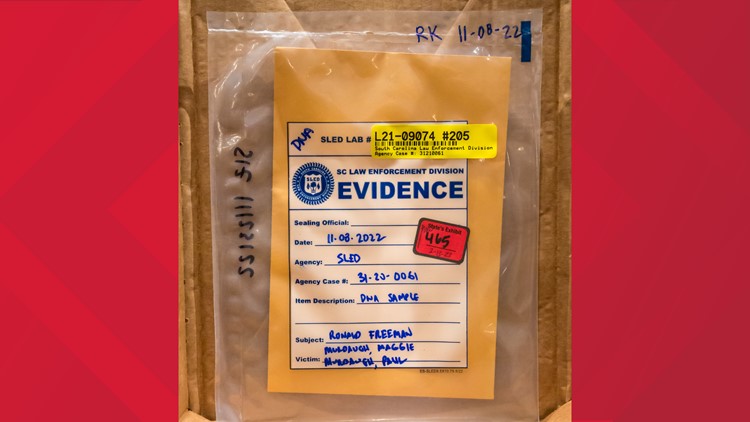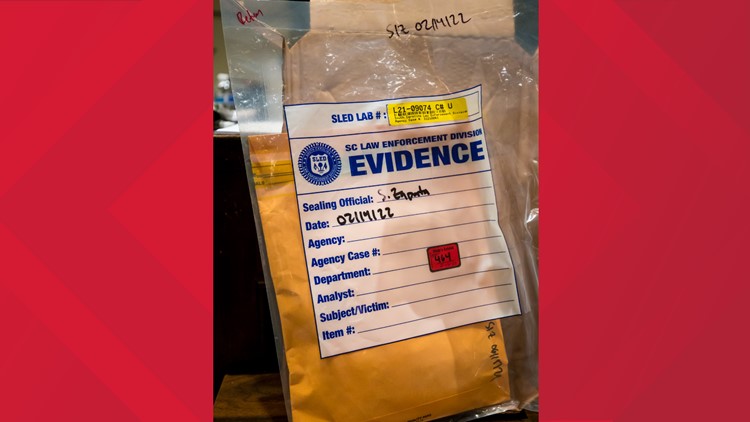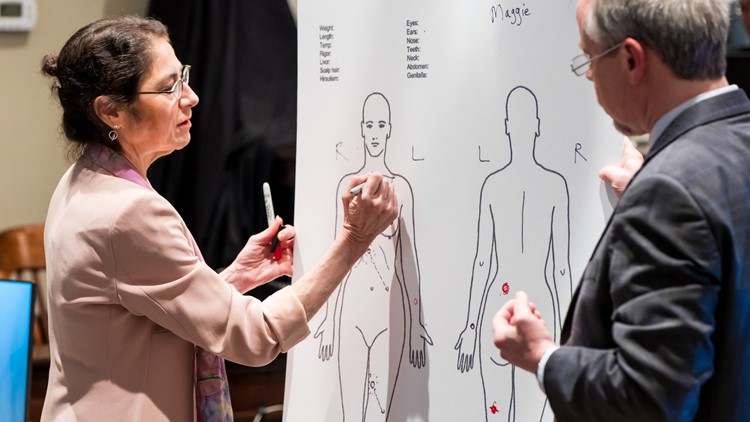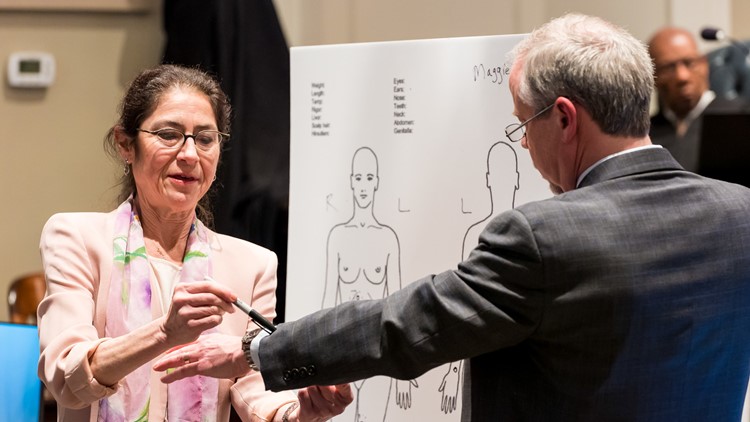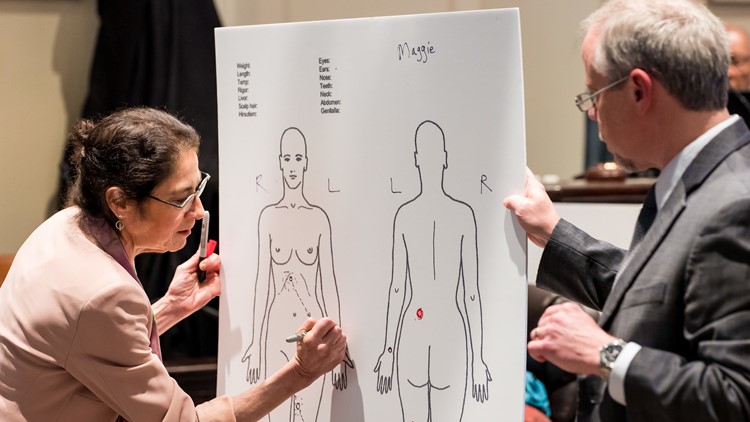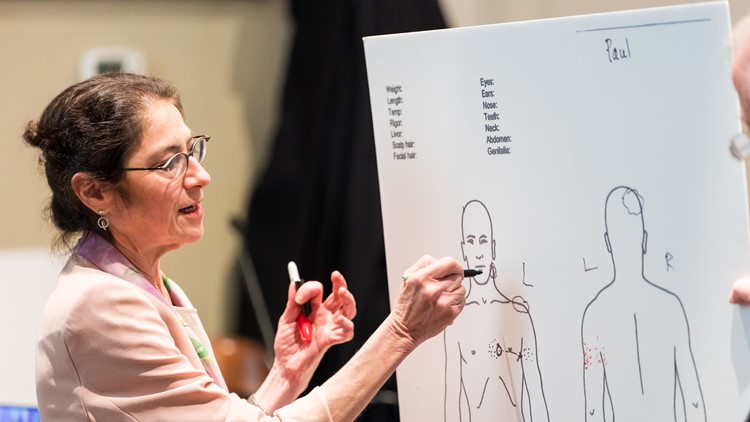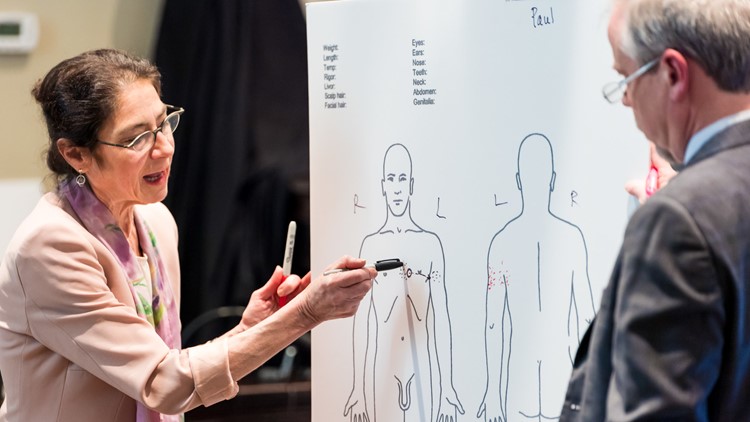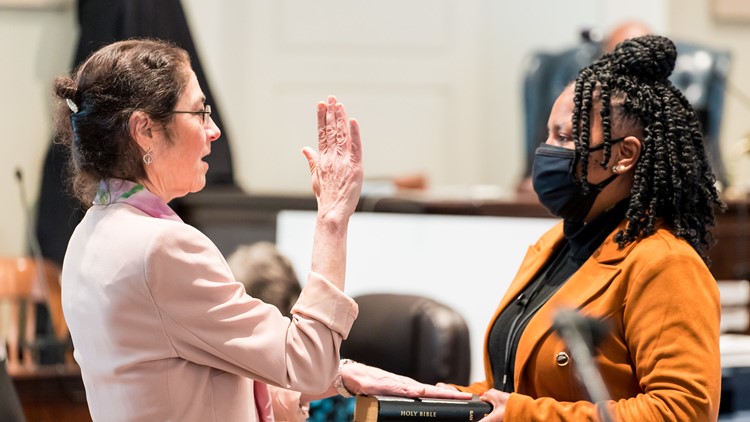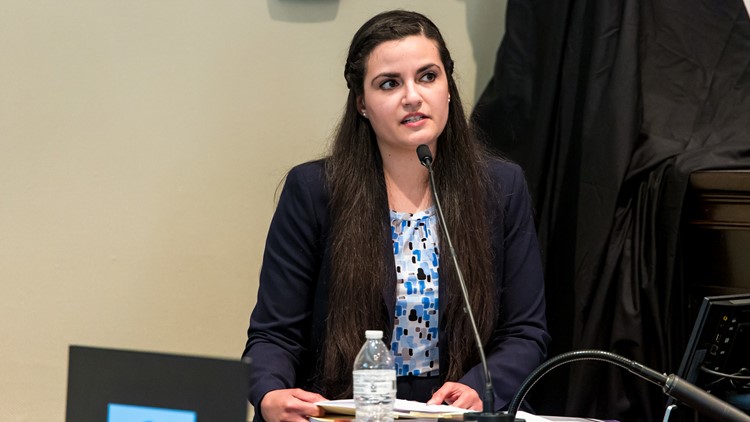WALTERBORO, S.C. — Jurors in the Alex Murdaugh double murder trial heard graphic testimony about the wounds that killed the two victims in the case.
The prosecution ended day 13 of testimony Monday with Dr. Ellen Riemer of the Medical University of South Carolina, a pathologist who testified to the wounds Maggie and Paul Murdaugh received in the killing.
For over 90 minutes, state attorney Creighton Waters had Riemer detail the traumatic injuries the victims received on June 7, 2021, the day of the killings. With words, diagrams, and pictures, the prosecution laid bare the brutality at the center of this crime that's captured state and global attention.
At one point, the judge stopped the testimony and gave the courtroom a brief recess to gather their thoughts. At the time, Alex Murdaugh could be seen crying uncontrollablly.
The defense will cross-examine her Tuesday.
The day began with the news that two jurors had to be replaced after they tested positive for COVID.
Judge Clifton Newman told the court before testimony began that the jurors had to step down because they were going to miss testimony due to their illness. Two alternates were picked to take their place, leaving three alternates remaining.
The defense did raise concerns about how many people were in court Monday, but the judge said he would not impose social distancing rules. He did, however, say people could wear masks.
Murdaugh is accused of killing his wife, Maggie, and adult son, Paul, on June 7, 2021 at the family's estate in Colleton County, a property known as Moselle. The defense says he acted along in shooting and killing the victims, while the defense says police and prosecutors rushed to judgment.
Murdaugh will eventually face separate trials for alleged financial crimes, but prosecutors are bringing up those allegations because they say it played a role in the motive in the crime.
You can find trial updates here every day. Live streaming coverage can be on wltx.com, on the WLTX+ streaming app on Amazon Fire and Roku TV, and on the News19 WLTX YouTube page.
Alex Murdaugh Monday Trial Updates
Two jurors tested positive for COVID-19 and were released from duty. They were replaced by two of the alternate jurors and chosen by lot. For the time being, Judge Newman will encourage those in the courtroom to wear masks.
SLED Agent Ryan Kelly.
State calls SLED Agent Ryan Kelly.
Kelly is a senior special agent and identified buckle swabs that had been entered into evidence.
SLED Agent Rachel Nguyen
State then called SLED Agent Rachel Nguyen who is the agent in charge of DNA and forensic serology (blood and body fluid) analysis.
Nguyen ran analysis on evidence taken from Moselle on June 7, 2021. She identifies the items she examined – 300 Black out casings which she processed for trace DNA. Nguyen explains the process for obtaining a DNA sample and how to prepare the sample for analysis. Nguyen as able to obtain DNA samples from the cartridges.
Nguyen also ran testing on some fired 12-gauge shot shells collected from Moselle. She was able to obtain samples from the fired shells.
Nguyen tested samples from the interior door handle of the dog shed, the Benelli 12-gauge shotgun – the shotgun was requested for testing for presumptive blood evidence (tested positive in some areas) – reddish brown debris from the shotgun (tested positive for possible presence of blood)
Samples collected from both the 12-gauge shot shells, the Benelli shotgun, the 300 Blackout casings, door handle, reddish brown debris, and other guns were documented and sent to the DNA lab for further DNA analysis.
On the Mossberg shotgun had request for latent fingerprints, touch DNA and blood. Nguyen tested one spot on the shotgun, and it tested negative for possible blood. Also, a Browning 12-gauge, a second Benelli 12-gauge and a rifle all tested for no apparent blood stains present.
PHOTOS: Alex Murdaugh murder trial - Day 16 (Mon, Feb. 13)
Nguyen identifies swabs taken from the Chevy Suburban that had been tested presumptive positive for blood, Nguyen tested all samples and all but the swabs from the steering wheel tested negative for blood. The steering wheel samples tested positive for blood. The steering wheel swab was sent to DNA lab for further analysis.
Nguyen identifies fingernail clippings from Maggie and Paul Murdaugh. Maggie’s and Paul’s clippings were tested and sent to DNA lab for further analysis.
Alex Murdaugh’s t-shirt shirt was processed for possible blood presence. Nguyen explains her process for two stains on the shirt tested positive — from the exterior bottom of shirt. After removing the initial two stains, another 10 stains were found through a second round of phenolphthalein testing on July 21.
Alex Murdaugh’s shorts had two stains positive for blood. A second test on July 21 found six additional stains. A stain in the pocket of the shorts also tested positive for blood.
Nguyen identifies the samples of additional testing of Alex’s shirt and shorts. The shirt has been marked to show where the samples were taken from – lower left and right edges of the back of the shirt and various places on the front of the shirt.
Alex Murdaugh’s red, yellow, and white tennis shoes were tested and stains on the left shoelace tested positive and sent to the DNA lab for further testing
The blue raincoat was processed, Nguyen said she tested 71 stains, all negative. The crime scene unit tested the raincoat and none of their targeted stains tested positive. An additional test for ownership was requested and Nguyen took two swabs from the coat for DNA analysis. During the process, Nguyen found no hair, but noticed the plastic seam liner was coming off of the raincoat.
Nguyen also processed buckle swabs and prepared them for DNA analysis.
CROSS EXAMINATION by Phillip Barber
Barber asks about the process of collection for possible touch DNA on the seven Blackout cartridges. Would any DNA results come for specific shell casings or the combined set of cartridges? Nguyen: All together combined
The two shotguns tested presumptive positive for blood? Nguyen: The swabs on Benelli were positive; the second shotgun was negative.
How does a test result in a positive? Phenolphthalein reacts with hemoglobin and turns color. It is not specific to human blood.
Are there chemicals that can cause a similar reaction? There are false positives – copper salts, nickel salts, rust, some plant materials can cause a similar chemical reaction.
Who would request a confirmatory test? Defense lawyers, prosecutors, law enforcement can request a confirmatory test.
A confirmatory test is more accurate than a presumptive test? Yes. Nguyen testifies she did not do confirmatory tests on the shotgun swabs
No one asked for confirmatory tests? No
The Chevy Suburban, you did do confirmatory tests for human blood? Yes.
Whose decision was it to perform the confirmatory test? Nguyen: That’s normal to confirm after a presumptive test is done in the field
Did you prepare the victims’ clothing? No
The only items tested from bodies were fingernails and clothing? Yes, I did not test clothing
From the white t-shirt, did you perform serology tests? No
Are you aware of serology tests performed? Nguyen: I believe there were
Someone other than you? Nguyen: My belief hematrace and other serology tests were performed by someone else (as on shorts and shoes)
Who does what in the labs? Nguyen has direct supervisor Laura Hash.
Does Hash direct your testing? Nguyen testifies she goes by the SLED manual and if additional tests are requested, those requests come from Hash. Nguyen only preps samples for further analysis.
Only hematrace test done was on the Chevy Suburban? Nguyen: No. She also did a test on F-150; 4 swabs on F-150 were negative for human blood; Only the Chevy Suburban tested positive for human blood.
Crime scene department performs presumptive tests? Yes
LCV, leucocrystal violet, is a presumptive crime scene unit (CSU) test? Yes. Test samples turn purple if blood is presumptive
We all saw the t-shirt gridded out. Why were presumptive tests done by CSU personnel and not the serology unit? Unknown, Nguyen’s unit doesn’t do LCD test.
If something tested in the field and comes to Nguyen, she does a do a presumptive test? Yes. Nguyen does presumptive tests if a presumptive test is not done in field so as not to diminish the amount of material collected in evidence.
If DNA found, is there a time Nguyen goes back and does a hematrace? No, although sometimes attorneys on both sides may request.
SLED Agent Sara Zapata
Zapata is a forensic scientist/analyst working in the DNA casework department. She develops DNA profiles. She explains sources of DNA include hair, blood, semen, saliva, bones, and skin cells (touch DNA). Touch DNA can be affected by surface touched, amount of time held and with how much pressure, environmental factors (rain), and personal hygiene habits. Once in the lab, there is no way to tell where the DNA sample came from – body fluid, body fluid, etc.
If there is a drop of blood on a shirt, can Zapata identify it? Zapata responds she can never 100% say that is your blood, but you may be a contributor to the blood profile.
Zapata explains standard DNA sample analysis and that DNA can be single-source or multiple-source and analysis can interpret the number of people involved in a multi-source sample. STRmix software assists in breaking down the number of sources in a multi-source profile. Zapata then looks at STRmix to calculate statistics for the likelihood of the explanation of DNA results.
Zapata can obtain results that include or exclude a person’s DNA or make an inconclusive/uninformative result. Items sampled from a body are called intimate contributions. There are times where Zapata cannot make a positive DNA profile, if there is familial DNA present.
Alleles are results of DNA testing at a specific location – the DNA profile. The fewer number of alleles, the less informative the results will be. Unrelated persons can share the same alleles.
DNA results are expressed in very large numbers. The larger the number, the more positive identification of the DNA contributor/source.
Zapata is asked if she received buckle swabs for comparison in this case. Yes. 24 total buckle swabs – one not included in the count because she did not do analysis on it for this case.
Zapata then identifies cartridge cases and shotgun shells taken from the crime scene that were processed for DNA. The 300 Blackout cases were interpreted as single-source, identified as belonging to Maggie’s profile.
Swabs from exterior of shotgun shells were interpreted as single-source and that Paul was the contributor of the profile.
Swabs from the feed room door exterior doorknob were interpreted as single-source, with Paul as the contributor of the profile.
Two swabs from the camouflaged Benelli 12-gauge shotgun (blood) were interpreted as a mixture of two individuals – most likely that Alex and Maggie; a second swab was inconclusive
A swab of reddish-brown material from a shotgun had a DNA profile of two individuals – most likely Maggie
Swabs from Paul’s cell phone resulted in partial DNA profile of inconclusive
Swabs from steering wheel of the Chevy Suburban were interpreted to be a mix of two individuals – Alex and Maggie. Multi-source DNA interpretation descriptions were simplified as imagining two people singing same song -- one quiet, one loud -- the song sounds loud because of the two singers and it is more accurate to say the quieter singer is contributing to the volume rather than the volume being singly responsible of one singer.
Left and right fingernails of Maggie. Left nails analysis results DNA profile as a mix of two individuals – Maggie and Claude CB Rowe. Rowe was included in the original DNA swab sampling; not many alleles attributed to Maggie under the fingernails
DNA analysis of Alex’s shirt and pants had DNA analysis show a mixture of results, depending on the area from which a particular sample was taken. Results included:
- shirt cutting from exterior front edge – 2 individuals, Maggie
- shirt cutting from exterior back – 2 individuals, Maggie and Alex
- another area from the shirt -- 2 individuals, Alex and Paul
- other inclusions – 3 individuals, Alex, Maggie and Paul
- two other individuals’ DNA turned up -- Nolan Tuten and Hippolito Torres – as well as an unidentified, unrelated sample.
Zapata explains hematrace tests resulted in no human blood identified on the shirt – but testing for blood and testing for DNA are different.
On the pants, Zapata’s cuttings from front left interior pocket results in a DNA mix of 3 individuals – Alex, Maggie, and Paul
Zapata is asked if any confirmatory tests (testing for the presence of blood) were done on the pants/shorts? No
On Alex’s shoes, the left shoelace resulted in the inclusion of single-source from Alex.
Swabs from the interior of the blue raincoat resulted in no DNA profile; from side opening of blue raincoat gave partial DNA that was inconclusive.
CROSS EXAMINATION by Phillip Barber
Did you do any analysis from the clothing on the victims’ bodies other than what has been presented? Zapata responded, the fingernails
Under Maggie’s fingernails, you found unidentified male DNA? There were some alleles present. Yes.
Were Paul and Alex excluded as contributors in that DNA sample? Yes
So, the male DNA from under her fingernails was not from Paul and Alex? Yes
Would it have been possible to conduct a Y-chromosome test? Yes, but so many males that were related had contributed DNA. The Y-chromosome is inherited so there is no way to distinguish between related males.
Were you aware Maggie had been to nail salon that afternoon? No
If Maggie’s nails were clean coming to Moselle, would she not have much of a chance to have contact with an unrelated male under fingernails? Zapata responds: I don’t know how or when the DNA could have gotten there, any time she touches something, she could have gotten the DNA.
Do you know CODIS? Yes, that is a database to assist in identifying DNA
Was the unidentified male DNA submitted to CODIS? No, the small number of alleles in the fingerprints didn’t meet the threshold for identification
Is it unusual to test clothing of victims? Typically, victims of shotgun wounds would be saturated with their blood and Zapata says she would need to know a specific area of the clothing to test.
Would hands be an area of interest? Zapata says it depends. If there was evidence of a struggle, possible. They take fingerprints to see if there might be evidence underneath.
Maggie’s DNA was found on the 300 Blackout shell casings? Yes, she was a contributor
There was information of contact with her body? Yes, there was information about one casing found under her body
You found Paul’s DNA on the shotgun shells? Yes.
On the Chevy Suburban’s steering wheel, you found Maggie and Alex’s DNA on the steering wheel? It was interpreted to be a mix of DNA from Alex and Maggie
Was it consistent with Alex handling a victim’s body and a hand covered with blood? I cannot tell you if that’s how it got there.
Neither shotgun had Paul’s DNA? Cammo Benelli, no; another shot gun, no; item 22.5, no distinction because mixed result
On the white t-shirt, did anyone tell you why the DNA tests were being done? Zapata: There was a request for DNA/blood.
Did anyone say, “we think Alex was wearing the shirt that night and we’re going to test it”? Zapata understood the shirt was worn that night
Zapata identifies the shirt and the markings where the cuttings were done for sampling. She is asked if Paul and Maggie’s DNA was found on the shirt? Zapata responds using the results of the eight samples taken: Maggie was excluded, Paul was included in one point; Paul excluded, Maggie included on another; no comparison for Paul and Maggie included; no comparison for Paul, Maggie included, also Nolan Tuten; Paul excluded, Maggie included; Paul excluded, Maggie included; undetermined; Paul excluded, Maggie no conclusion.
Paul’s DNA only found at bottom of shirt – Zapata says there were other stains but because of familial similarities could not say it was solely his DNA.
Reports for shirt were on June 25, 2021, and second report on July 25, 2021. On July 26, did you attend a meeting with law enforcement? Yes
Was the purpose to discuss the DNA report? Yes
Were you asked to perform hematrace tests? Not at that meeting. When were you asked to perform hematrace tests? Aug. 10, 2021.
And results were negative? yes
Did you make smaller cuttings from larger samples? Yes, she responds she took smaller cuttings from the samples already taken.
Zapata identifies photographs of the larger cuttings with the smaller cuttings for the hematrace tests. She says she tried to make cuttings for hematrace testing along the edges of where she had already cut for DNA testing. Some cuttings are extremely small. Zapata is asked to count the hematrace cuttings in each of the samples. In total, she made 74 smaller cuttings from the larger samples. Zapata said test results found no blood from those samples.


On Aug 16, you went to meeting to discuss outstanding DNA results? Items still had pending DNA assignments and if DNA testing was still required. I do not recall
Request for hematest was made on Aug. 10 and relayed by supervisor Hass. Hass was present when the test was performed.
In 2021, were you informed SLED was seeking blood spatter analysis of the shirt? Zapata said she heard blood spatter was requested but does not know result, but that was after the shirt left her lab.
When first time hematrace test appeared on a report? Report was issued Nov. 10, 2021.
Were results for blue raincoat reported? Yes
Dis you discuss the results of the hematrace report with anyone on this case? No
With any agents on the investigative side? Zapata said she was asked to give an update on when results would be given. She made a phone call to relay the results, and gave Agent Ghent given preliminary results
You gave agents the hematrace results? Only the findings on the raincoat
March 22, 2022, aware blood spatter test requested. Were you aware of a report saying there was high splatter gunshot residue on shirt? I was not told
On April 11, 2022, the Attorney General requested a meeting to discuss the reports. In preparing for the meeting, did you access report? I would have reviewed my report, yes.
At the meeting, was blood spatter have been discussed? That had nothing to do with her testing, so didn’t know.
Were you aware of media reports about blood spatter tests? I tried to avoid media reports
Did anyone ask you about your tests in relation to blood spatter results? We discussed hematrace results, probably while going over reports of all testing results
Know when that was? Zapata says probably April meeting.
Zapata was not in all of the meeting all of the time so doesn’t recall specific discussion of blood spatter at the meeting.
Zapata identifies the memorandum to her file for this case concerning hematrce. She was asked to research hematrace and its potential effects of the tests on possible negative hematrace results.
Creighton Waters asked Zapata to make the report. Zapata says Waters asked her to do the report to get more information on negative hematrace reports
Did you discuss the report by Tom Bevel? I’m not a blood spatter expert, I don’t know what the report may have said.
Bevel’s report on hematreace and LCV testing.
Zapata attached articles she found on hematrace to her report. She is asked if the first article said hematrace testing is more effective after treatment of LCV? Zapata says for that article there were many tests performed in order to test hematrace results, and hematrace tests were found to be most effective after LCV tests were performed.
In next article, a chart shows the increase of positive hematrace results analysists were able to get after LCV testing.
Zapata is asked if it is fair to say there is no human blood on the t-shirt? According to Zapata’s results, there was no human blood on the shirt.
Were you aware the shirt was a fishing shirt? Have you ever gaffed a fish? I did not and I cannot answer about the blood spatter. Hematrace reacts to human and higher primate blood.
Did you attend a meeting on Jan 5 of 2023? Yes
Was blood spatter discussed? Zapata testifies the group talked about results of the shirt, but she says she is not blood spatter analyst.
Were Bevel’s results discussed? She cannot remember
Were Deputy Kinsey’s report discussed? Cannot recall
Was t-shirt discussed? Don’t remember specific items discussed
A lot of work done on shirt. Tests with phenolphthalein, DNA, hemotrace, and memorandum on hemotrace from June 2021 to a month before trial. Zapata says analysis was complete before then, but yes, a lot of work was done.
In the meetings you attended and blood spatter was discussed, was there ever a blue button-down shirt discussed? Not that Zapata recalls.
REDIRECT
When you analyze something are you aware of presumptive positive tests for blood? Yes
Defense asked about touch DNA. When you analyze casings and shotgun shells, what are you analyzing for? Zapata said the request was for touch DNA but because some staining on certain swabs, those were tested presumptive positive for blood.
Whose other DNA would you look for? Typically, when shells are submitted, Zapata says she is looking for anyone who might have handled the ammunition.
In Zapata’s experience spent casings are not a good resource of touch DNA because as bullet fires, its moving through intense heat and that heat can affect the recovery of DNA.
Also, with touch DNA, do you know when it was deposited? Zapata cannot say when DNA is deposited.
Do you look at what is to be analyzed? No, we are requested to take the tests.
Do you test any items not requested? No
RECROSSS
Is it uncommon to find touch when an object is touching a person? No
Dr. Ellen Riemer
Riemer is a pathologist at Medical University of South Carolina. As a forensic pathologist, she tries to determine the manner of death through detailed surgical processes. She conducted the autopsies of Paul and Maggie Murdaugh on June 10, 2021.
Typical to have assistants present? Yes assistants are there to help her and are under her direction.
Any physical evidence taken during the autopsy, is there law enforcement present? Riemer collects the evidence and logs it and puts it in safekeeping until it is turned over to law enforcement with her report.
>>> PAUL's AUTOPSY
She identifies a blank body diagram that she starts with on all autopsies that she uses to take notes for her edification and for later summarizing the autopsy report.
Riemer says shotgun wounds are different form any other gunshot wounds. In shotgun cases, pellets are enclosed in a wadding within a shell and as the shell exits the gun barrel and releases the shot, the wadding opens and releases the pellets. Paul’s wounds showed beyond a doubt he was shot with a shotgun.
The first shotgun blast was to the right side of Paul’s chest and wadding containing pellets traveled under the skin, through muscle and fat, before exiting the left side. The wadding got stuck under the skin of the left side of the chest, near the underarm. From there, multiple shotgun pellets went through underside of the left arm and a bunch of exit wounds on the left side of the arm and back. There was stippling on left side of the chest from fairly close range (no more than 3 feet). This injury was not fatal, he would have needed stitches, but the shot did not hit internal organs or cause internal bleeding. It would not have sent him to the ground. Photos are shown to the jury of Paul’s autopsy. Riemer shows the wadding from another angle – Paul’s back. The exit wound is shown with abrasions on the underside of the left side of the arm and chest that Riemer says indicate Paul’s arm was down by his side when he was shot. Another photo shows pellets in the exit wounds that don’t have the same type of abrasions indicating the pellets are leaving the wadding and spreading out.


Another set of photos show the second shotgun injury to Paul. The second blast went to the top of the left shoulder. Lots of pellets were recovered from the left shoulder and went into the left side of the neck and face. Paul’s face was not destroyed but there was a large exit wound on the right side of the head, with a slight back deviation. Riemer theorizes how that happened: If he was turned to the shooter, to the left, it explains the shot. This shot was fatal. It went through the base of the skull. His brain was ejected out of the skull and the skull arrived in Riemer’s lab in a bucket. He would not have been able to sustain his fall. Abrasions on his face indicate he hit the ground in a linear fashion, falling with the force of the body. There were scrapes on the right side of the face. A single piece of ammunition did this damage. A piece of Paul’s head, the contours of his skull not involving the forehead, indicates a turn to the left. A photo of the facial area indicates the right side of the head was opened.
Riemer identifies the pellets recovered from the left shoulder of Paul Murdaugh.
Riemer says she saw no evidence of defensive wounds on Paul’s body. Nothing on his hands to show he had his hands up to his face to deflect anything that might happen. The fall to the ground was face down and that caused the scrape to his cheek.
A toxicology report was done on Paul, the only thing Paul had in his body was caffeine. Based on her experience, Riemer said the first shotgun blast to the front of the chest, remained standing and the second shotgun blast was to the head and was fatal.
>>> MAGGIE'S AUTOPSY
Riemer said she observed a total of five gunshot wounds from a minimum of four shots to Maggie’s body. She says Maggie sustained injuries from an assault rifle in this order: entrance at front of chest lower rib cage from front to back and downward with an exit wound 10 inches below entrance going through abdominal wall and intestines traveling thought the pancreas and left kidney and left iliac artery, exiting left side of her back.
Second injury to the front of the body on inside of left thigh, also front to back, toward left and backward, following parallel path of first shot. Exit wound on back of left thigh did not break any bones. Both wounds had gunpowder stippling around them, indicating Maggie was shot within 3 feet, both shots exiting the left side of body. Maggie’s left wrist was also injured, with exit wound to inside of arm. Neither wound to the chest or thigh was immediately fatal.
The fourth injury somewhat unusual, Riemer says, going in an upward direction through body. The entrance is under the left breast, exits behind left breast, bruising in left side of clavicle as the bullet reentered and went through underside of the left side of Maggie’s face. This one would have been immediately fatal as it destroyed brain. There was a scrape below left breast as the bullet scraped along chest before entering body. No stippling on this wound.
The fifth gunshot was to Maggie’s head, entering the back of the head near the base of the skull and going downward, through brain stem and cerebellum, exiting her back. The bullet casing shatters as it enters the body. Lots of fragmented projectiles exited her back.
Riemer theorizes the third shot hit Maggie probably as she was bent over or possibly heading toward the ground, on her hands and knees, and then the fourth and fifth shots hit her. Riemer says either the fourth or fifth shots would have been fatal.
Riemer says the automatic ammunition fragments in the body and causes the most damage once it enters the body. There are four wounds that are known. Maggie must have been in pain from the shot to the abdomen, if she is on the hands and feet, the injury to the wrist could have been sustained at the third shot.

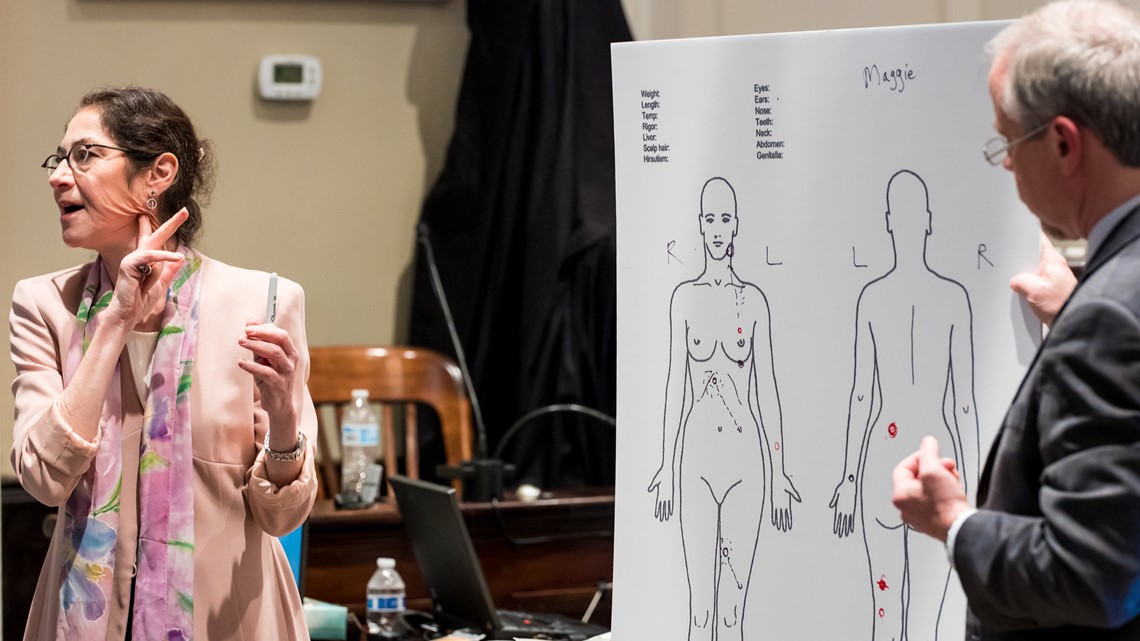
Riemer identifies photographs from Maggie’s autopsy that are then shown to the jury. Riemer cannot say for certain if Maggie had her wrist on her abdomen when she was shot, but if it was, it was the perfect line for the fatal shot.
Riemer says there was movement on at least the part of the shooter. The fourth shot was fired from behind her, incapacitating her. She will face down and the last shot was probably shot from in front of her. There is so much tissue destruction, there is so much blood on the tissue. No sign of defensive wounds or sign of a fight with her attacker.
If the shot to the abdomen had been the last, there would have been more bleeding. More blood available for analysis.
Both Paul and Maggie had recently digestible food, both had eaten the same meal recently. She had 600 ml, he has 500 ml of food in their stomachs.
Maggie’s toxicology results showed caffeine only.
Riemer’s official opinion of Paul’s ddeath was shotgun wounds to head and chest, the manner of death was homicide; Maggie died of multiple gunshot wounds and ruled a homicide.
Riemer was able to recover multiple fragments of the bullets from Maggie’s body at autopsy.
CROSS EXAMINATION by Harpootlian will begin Tuesday morning.
Court resumes at 9:30 on Tuesday.
Live streaming coverage can be on wltx.com, on the WLTX+ streaming app on Amazon Fire and Roku TV, and on the News19 WLTX YouTube page.

